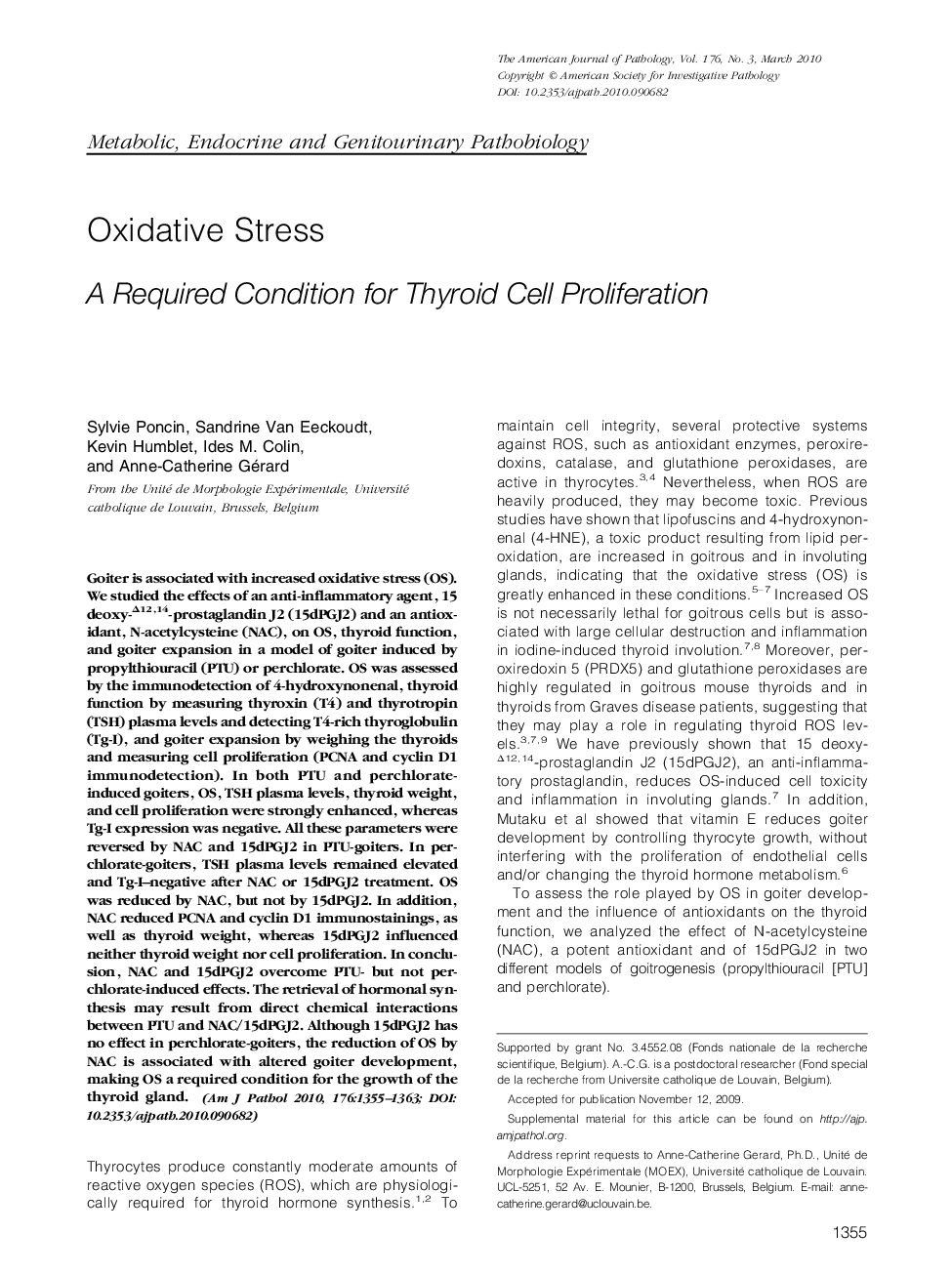| Article ID | Journal | Published Year | Pages | File Type |
|---|---|---|---|---|
| 5936677 | The American Journal of Pathology | 2010 | 9 Pages |
Abstract
Goiter is associated with increased oxidative stress (OS). We studied the effects of an anti-inflammatory agent, 15 deoxy-Î12,14-prostaglandin J2 (15dPGJ2) and an antioxidant, N-acetylcysteine (NAC), on OS, thyroid function, and goiter expansion in a model of goiter induced by propylthiouracil (PTU) or perchlorate. OS was assessed by the immunodetection of 4-hydroxynonenal, thyroid function by measuring thyroxin (T4) and thyrotropin (TSH) plasma levels and detecting T4-rich thyroglobulin (Tg-I), and goiter expansion by weighing the thyroids and measuring cell proliferation (PCNA and cyclin D1 immunodetection). In both PTU and perchlorate-induced goiters, OS, TSH plasma levels, thyroid weight, and cell proliferation were strongly enhanced, whereas Tg-I expression was negative. All these parameters were reversed by NAC and 15dPGJ2 in PTU-goiters. In perchlorate-goiters, TSH plasma levels remained elevated and Tg-I-negative after NAC or 15dPGJ2 treatment. OS was reduced by NAC, but not by 15dPGJ2. In addition, NAC reduced PCNA and cyclin D1 immunostainings, as well as thyroid weight, whereas 15dPGJ2 influenced neither thyroid weight nor cell proliferation. In conclusion, NAC and 15dPGJ2 overcome PTU- but not perchlorate-induced effects. The retrieval of hormonal synthesis may result from direct chemical interactions between PTU and NAC/15dPGJ2. Although 15dPGJ2 has no effect in perchlorate-goiters, the reduction of OS by NAC is associated with altered goiter development, making OS a required condition for the growth of the thyroid gland.
Related Topics
Health Sciences
Medicine and Dentistry
Cardiology and Cardiovascular Medicine
Authors
Sylvie Poncin, Sandrine Van Eeckoudt, Kevin Humblet, Ides M. Colin, Anne-Catherine Gérard,
